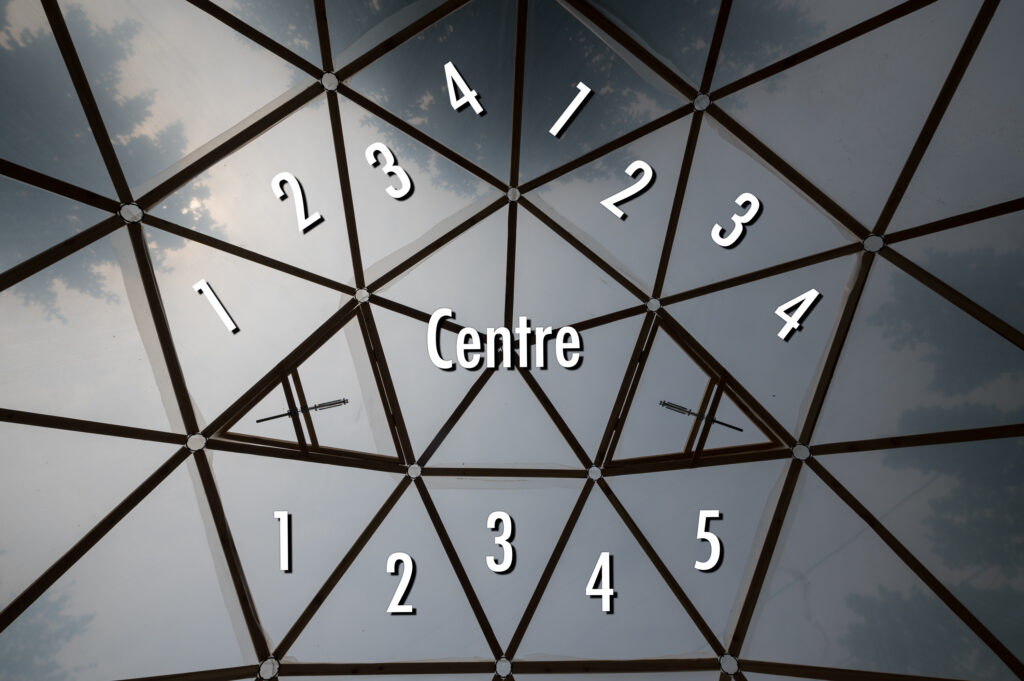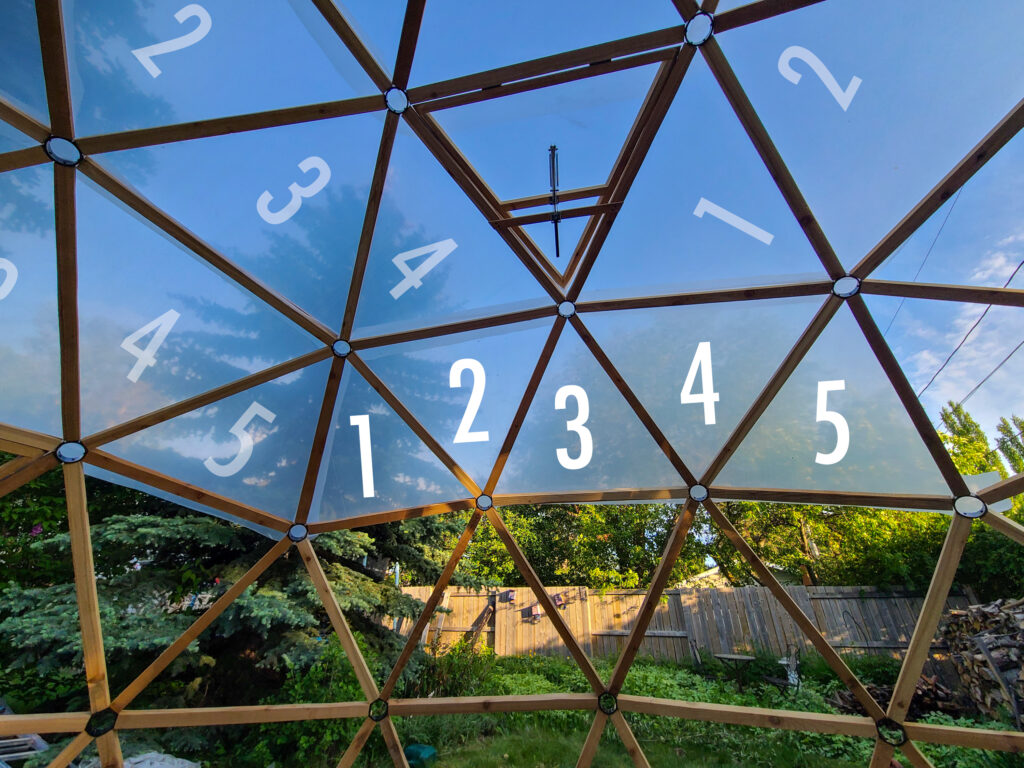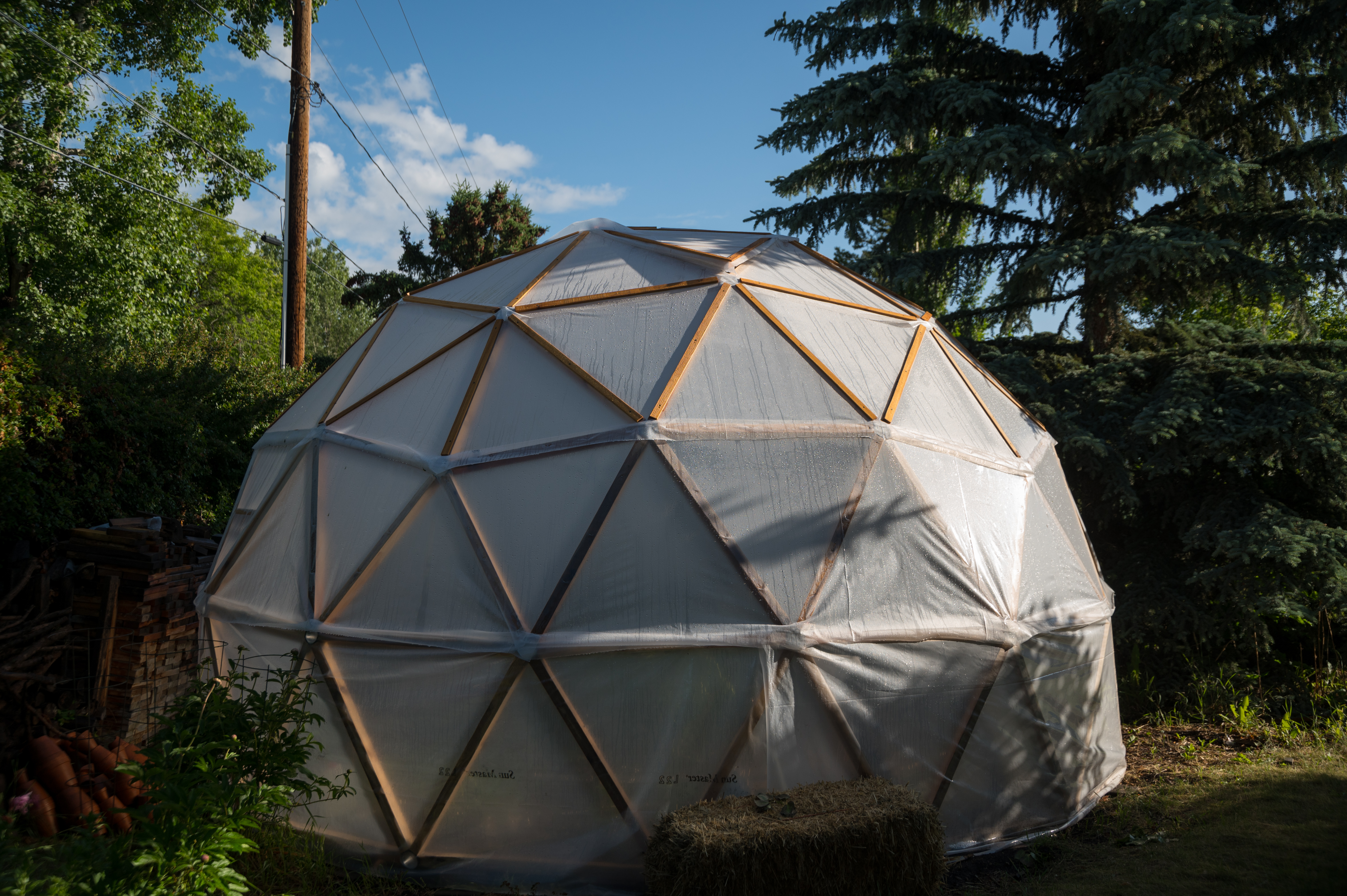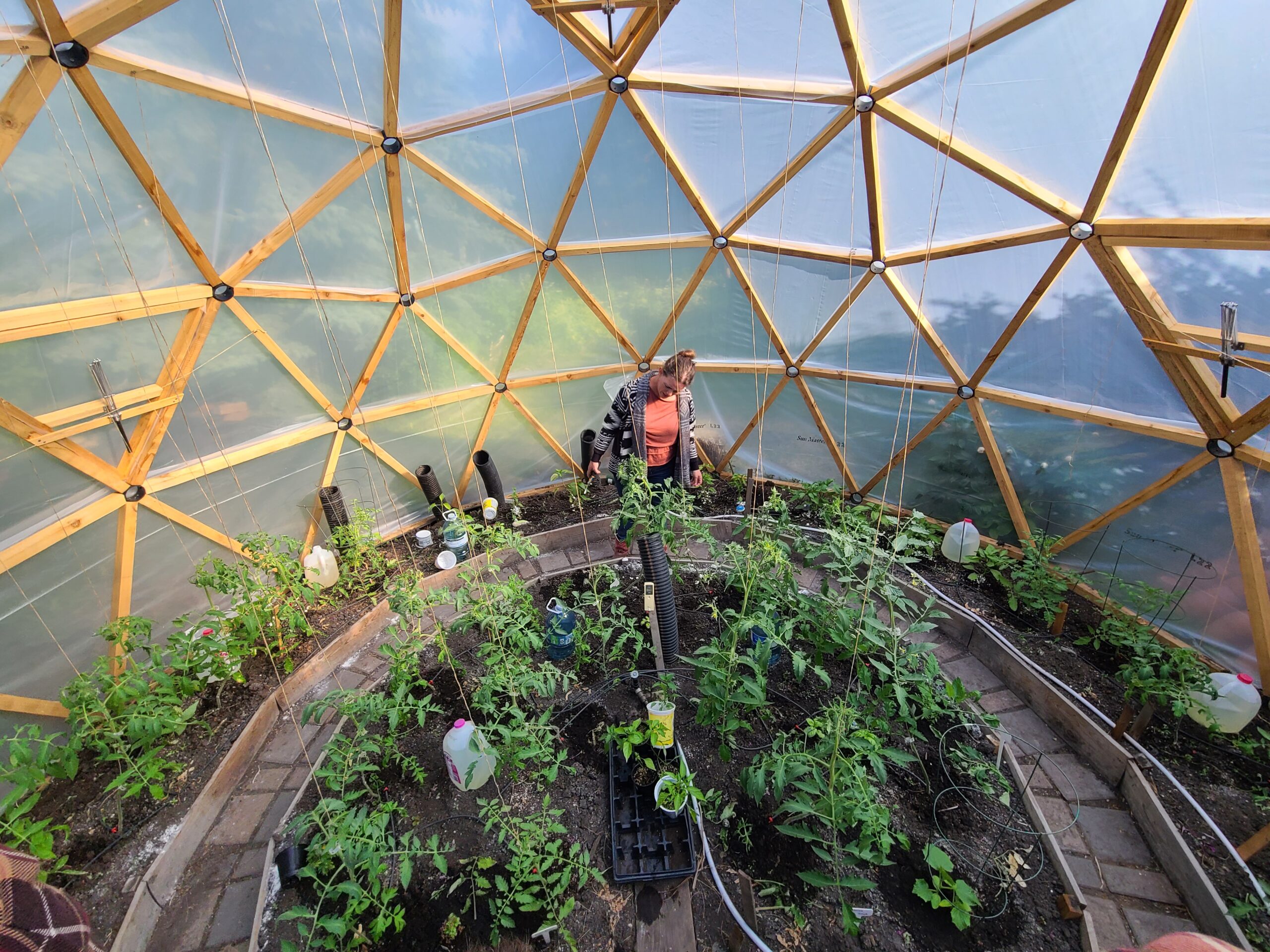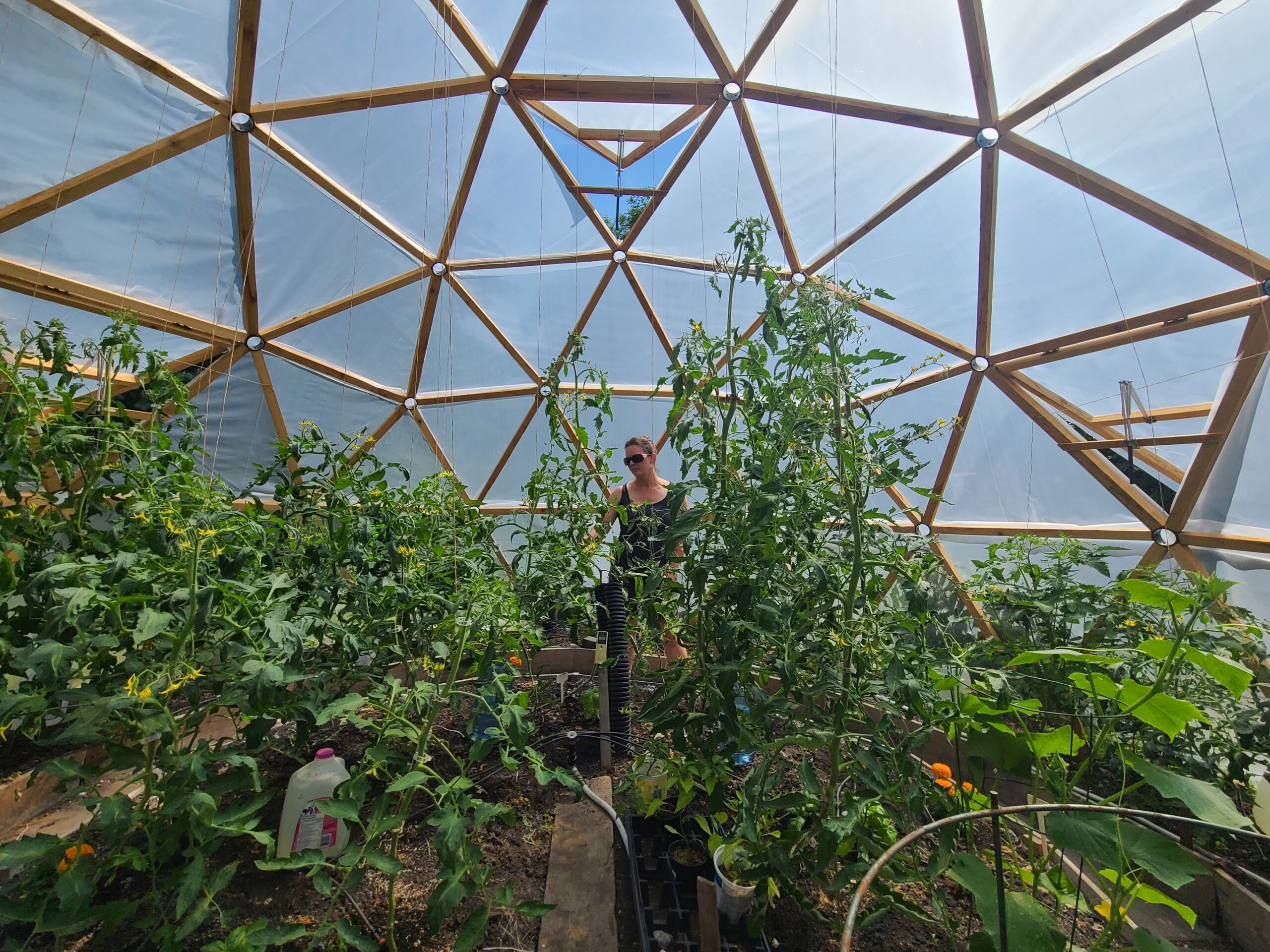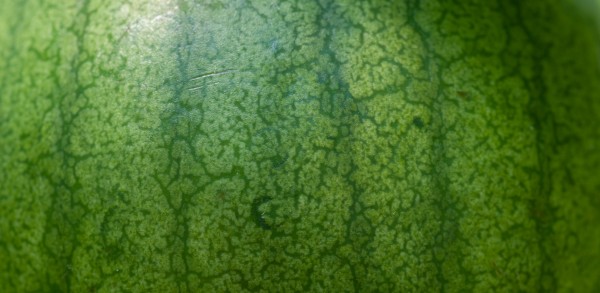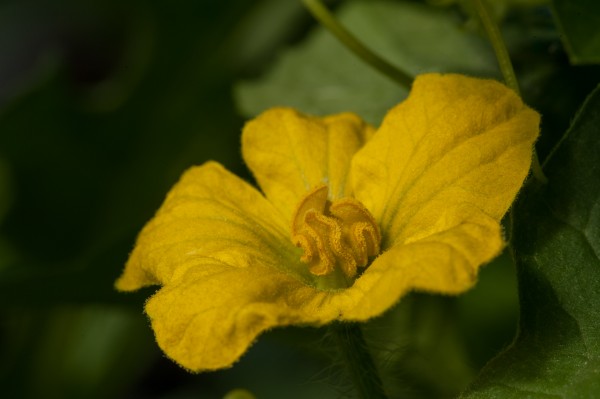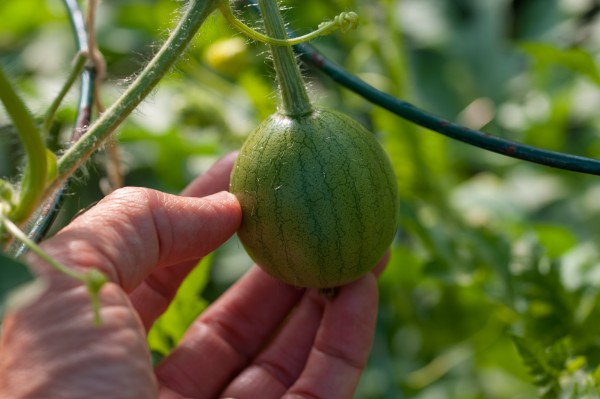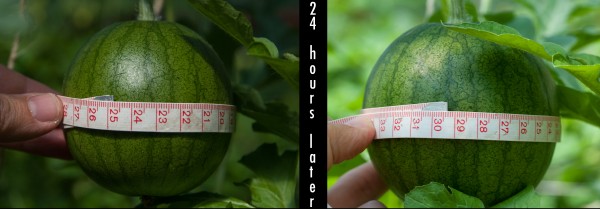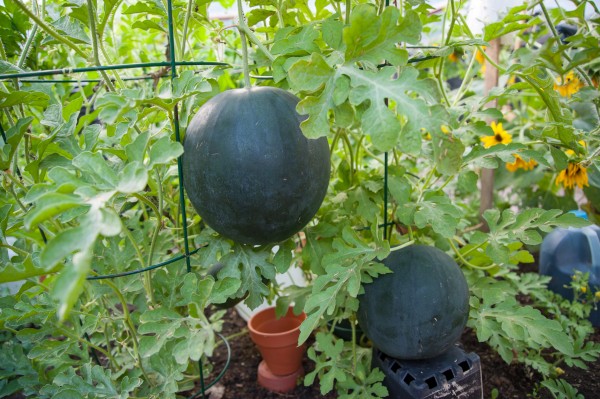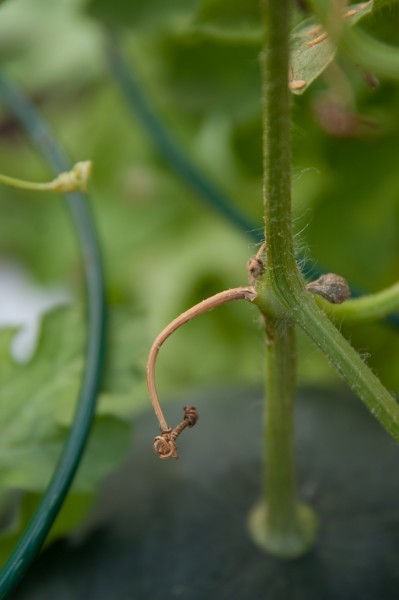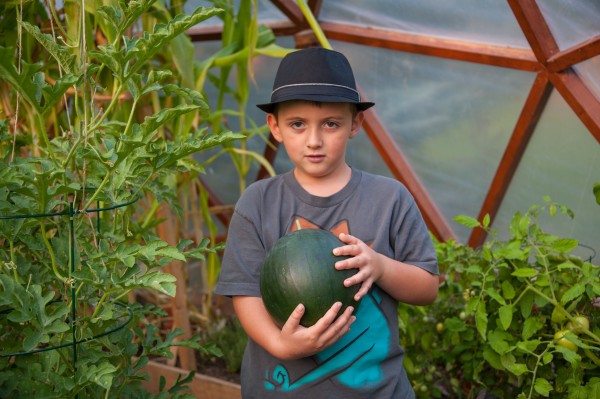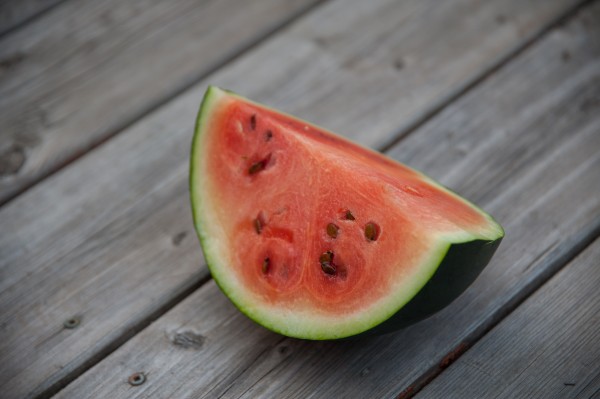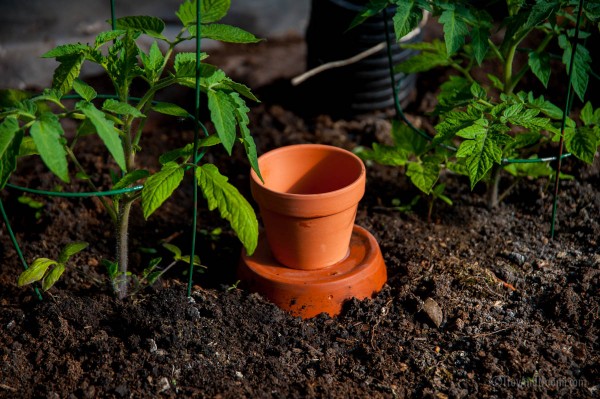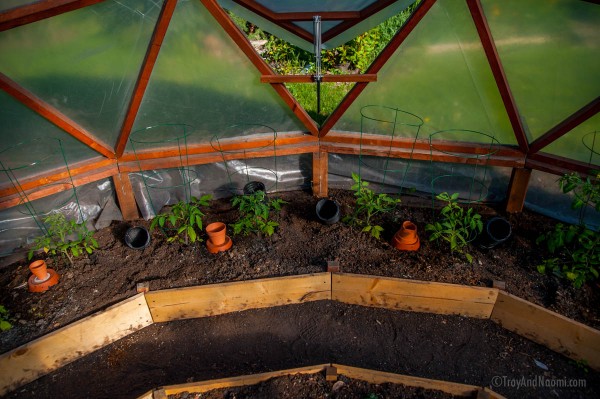The greenhouse is dead. Long live the greenhouse!
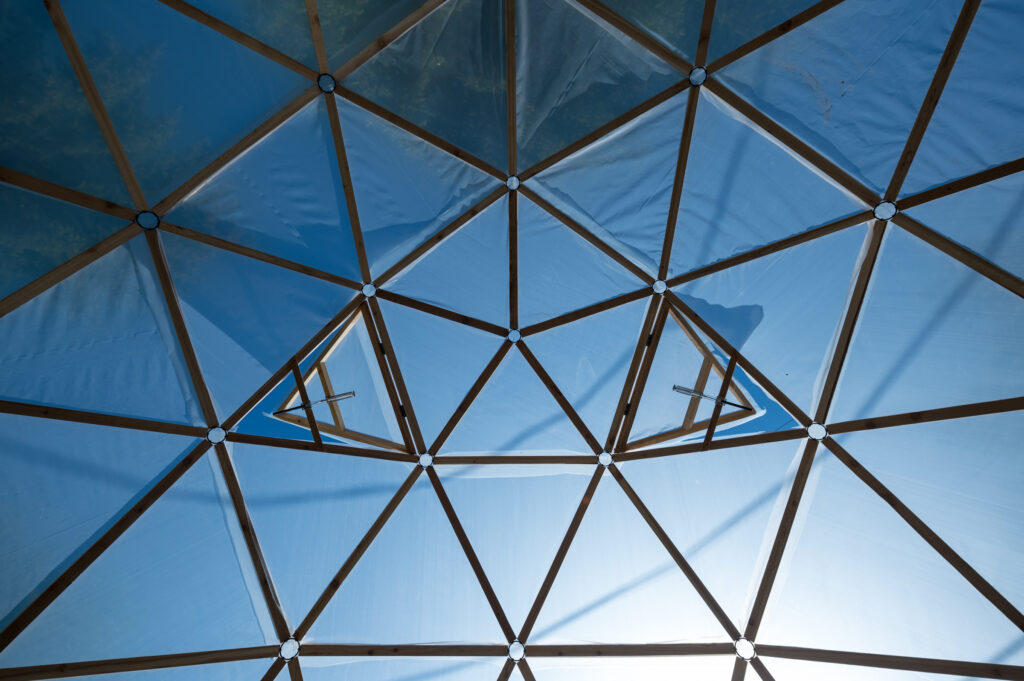
After 9 years with us, and at least 3 years with the previous owners, our old greenhouse was rotting out. Spruce wood and high humidity don’t mix well, and some of the boards hardly had any solid wood left. But even in this condition, the dome could support my weight when I hung from the top.But it was time to go and in late May we tore it down and gathered materials to make a new one.




The new dome would be the same footprint, but with a different connection style. We used ABS pipes as hubs instead of having the wood come together in complex joints. This made cutting the wood pieces much easier.
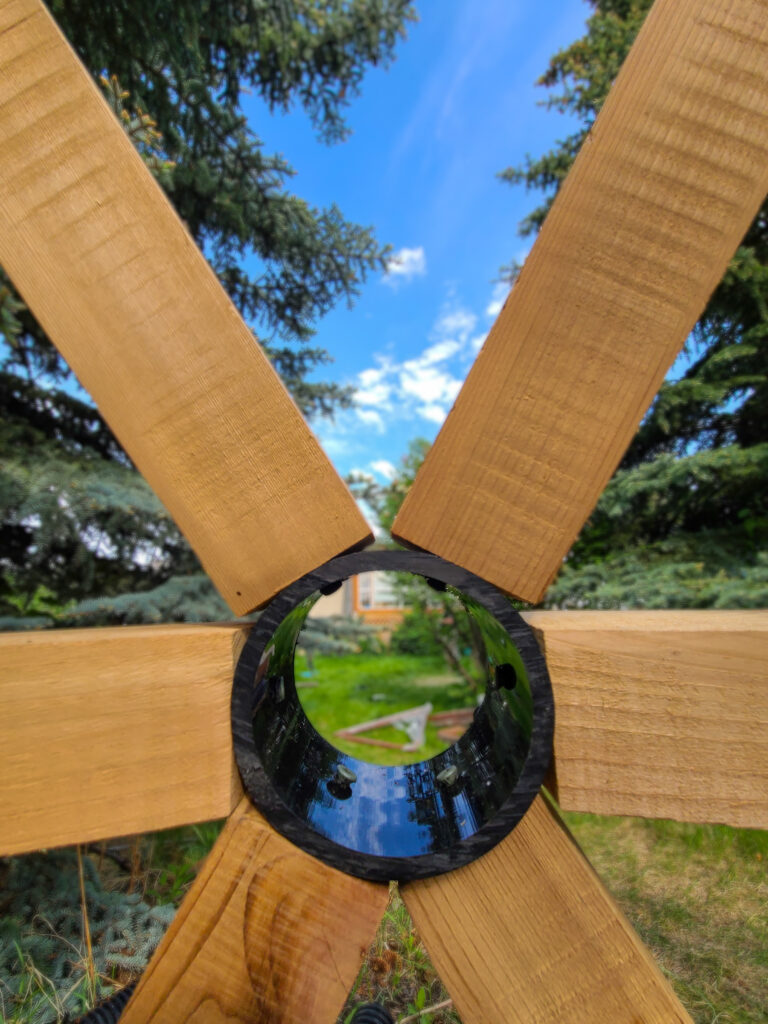
The plans we used: https://acidome.com/lab/calc/#Flat_7/12_Piped_D90_3V_R2.75_beams_50.8×38
This dome is a 7/12th dome (just over half a sphere)
It is 5.4 meters across (or 18 ft, or approximately 1/20th a football field for my American friends), and just over 3 m or 10 ft high at the centre.
165 boards in 5 different lengths (would be just 3 but we want a flat base).
61 pieces of ABS pipe cut into rings as connectors.













Once the frame is up, you have to cover it. We ordered some greenhouse grade poly to cover it, but then there is the challenge of covering a partial sphere with a flat material. We ended up going in in rows.
The peak of our dome is a pentagon, so we decided to do one piece for the whole top to reduce the chance of leaks. This mean we had to do some folding to get it over the curve, but the folds are hidden under the cedar straps we put on. The plastic is stapled in place, then thin wooden straps to help hold it down in the wind.
The peak is hard to do as it is all ladder work. You could probably climb the structure, but cedar is a weak wood and I didn’t want to trust it.
We decided to cut the greenhouse plastic into strips rather than larger geometric shapes. It worked pretty well, and it gives good overlap from one layer on down. We were often able to do 4 or 5 triangles in a row at a time.
Putting up the center and the next layer down were the hardest, and that layer we had to work around the two windows. Lower than that it got much easier.




Putting on the plastic skin took a lot longer than I thought as each piece had to be cut out, stapled, and then straps put on to help hold the plastic in place.
Once the inside ladder work was done you can see Naomi at work planting tomatoes and peppers.
